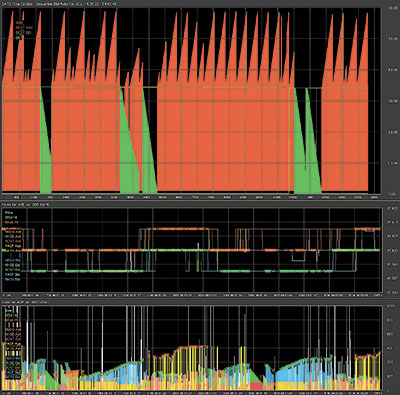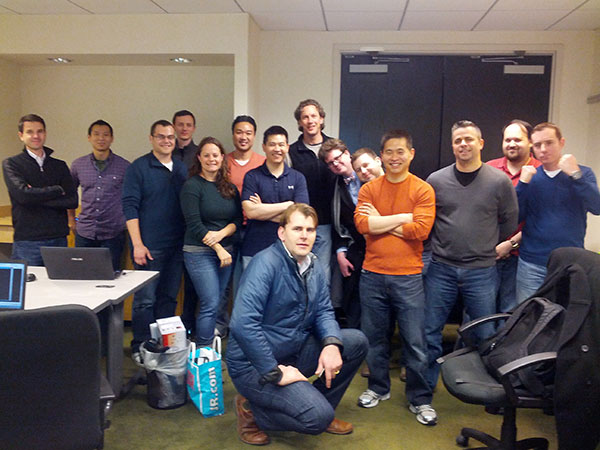‘Flash Boys’, by Michael Lewis
Simply sign up to the Life & Arts myFT Digest -- delivered directly to your inbox.
Flash Boys: Cracking the Money Code, by Michael Lewis, Allen Lane, RRP£30/WW Norton, RRP$27.95, 288 pages
Michael Lewis has a spellbinding talent for finding emotional dramas in complex, highly technical subjects. He did it for the role of left tackle in American football in The Blind Side (2006), and for the science of picking baseball players in Moneyball (2003). In Flash Boys, he turns his gaze on high-frequency computerised trading in US stock markets.
In terms of sheer storytelling technique, Flash Boys is remarkable. High-frequency trading, although often in the news when things go wrong, as in the 2010 “flash crash”, is hard for a specialist to understand, let alone the average reader. It is as if a violinist, bored with the repertoire, opted to play Paganini right-handed as a challenge.
Lewis reaches a stark conclusion: US stock markets are now rigged by traders who go to astonishing lengths to gain a millisecond edge over their rivals. As the innocent investor presses a button to buy shares, they leap invisibly into electronic markets to profit from the order and thousands of others, siphoning off billions of dollars a year.
The rise of high-frequency trading (HFT) was encouraged by a regulation passed in 2005, which aimed to open large exchanges such as the New York Stock Exchange and Nasdaq to stiffer competition. The idea was to make trading fairer; it instead unleashed, in Lewis’s view and that of other critics, a tidal wave of algorithmic front-running by traders whose superfast connections to stock exchanges allow them to react to buying and selling before others can.

The Business Book of the Year Award has selected 152 books for its longlists since 2005. Together the longlisted books constitute a reader’s guide to a turbulent decade for business, media and publishing, with the financial crisis at its centre
Lewis turns it into a human narrative by telling the rise of HFT through the eyes of Brad Katsuyama, a former Royal Bank of Canada trader who came to Wall Street and was shocked by what he found. He finally founded his own exchange, designed to outwit the HFT abusers, with a supporting gang of traders and obsessives.
If Lewis is right, not only have regulators allowed a huge financial scandal to take place under their noses but they encouraged the degradation of the US stock market. “What had once been the world’s most public, most democratic, financial market had become, in spirit, something more like a private viewing of a stolen work of art,” he writes.
If, that is. The rights and wrongs of HFT have been hotly debated for some years, with inflammatory accusations being flung around on both sides. There is, after all, a lot of money at stake and today’s professional trader is very articulate, often with an advanced degree. They are not only highly motivated to throw mud at each other, but well equipped.
The argument against Lewis is that HFT, which accounted for 65 per cent of US stock market volume by 2008, may indeed be selfishly motivated but it helps to raise liquidity and lower spreads (the gap between the amount you pay to buy a share and what you get for selling it). Nobody loves the HFT trader, but he is a useful parasite.

Lewis counters that HFT creates volatility and a mind-bending amount of activity, not liquidity. But he carries the reader so firmly toward this conclusion that one ends up feeling a bit manipulated, and wondering whether his paean for IEX, the new exchange, is really justified. Human kind, TS Eliot wrote, cannot bear very much reality; Lewis cannot abide much subtlety.
This is not a condemnation. I am not sure how wide the audience for Flash Boys is: many people want to read about baseball or football but fewer yearn to know about algorithmic trading. But anyone with a vague interest will get a lot out of Lewis’s journey through the world of HFT, featuring fibre optic cables in New Jersey, Russian software engineers and the off-exchange trading venues known as “dark pools”.
Above all, Lewis has a gift for narrative. He is not the first to write about Spread Networks, a start-up that secretly laid an 827-mile, $300m fibre optic cable from Chicago to New Jersey to enable trades to make a round trip in 13 milliseconds. But he turns it into a great story, complete with construction crews baffled by what they had been hired to do.

The explosion of investment – with HFT funds competing to place their equipment closest to exchanges to shave milliseconds off the speed at which they could trade – was unleashed by the shift from human trading on stock exchange floors to computer technology. The gaggle of people in the pit was replaced by a crowd of servers in a data warehouse.
“This was perverse,” he writes. “The initial promise of computer technology was to remove the intermediary from the financial markets, or at least reduce the amount he could scalp from that market. The reality turned out to be a windfall for financial intermediaries – of somewhere between $10 billion and $22 billion a year.”
One of the subplots is the role of Russian computer programmers, including Sergey Aleynikov, an employee of Goldman Sachs who was arrested by the FBI after leaving the bank in 2009 and charged with stealing computer code. Many of Wall Street’s HFT elite are Russian – according to one trader, because “All of the Soviet Union for seventy years were people who are skilled at working around the system.”
Aleynikov, who was convicted of theft and sentenced to 97 months in prison but had his conviction quashed by the appeals court, straddles Lewis’s moral divide. The Russians get a bad rap for being part of the HFT conspiracy, and patronising about Americans’ lack of mathematical skills. But Aleynikov emerges well, perhaps because he talked to Lewis.
Even Katsuyama comes round to the HFT villains towards the end. “I hate them a lot less than before we started,” Lewis quotes him as saying. “This is not their fault. I think most of them have just rationalised that the market is creating the inefficiencies and they are just capitalising on them. Really, it’s brilliant what they have done.”
Indeed, as Lewis explains, much of their behaviour was perfectly in line with regulations – the Securities and Exchange Commission deliberately tried to weaken the monopoly power of large exchanges to create more competition. It may not have appreciated the scale of what it would unleash – 13 public stock exchanges and more than 40 private “dark pools”.
And financial trading is not the only ecosystem that is highly complex and aggressive. “I would ask the question, ‘On the savannah, are the hyenas and the vultures the bad guys?’ ” says one of Katsuyama’s more dispassionate colleagues. “We have a boom in carcasses on the savannah. So what? It’s not their fault. The opportunity is there.”
John Gapper is the FT’s chief business commentator
Comments